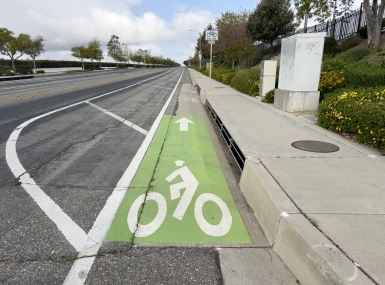What’s in the American Jobs Plan?
Upcoming Events
Related News

Key Takeaways
President Biden has unveiled the American Jobs Plan, a $2.3 trillion investment in America’s infrastructure that funds sectors from transportation to drinking water to public schools.
Alongside the plan, Biden also released his Made in America Tax Plan, outlining the revenue sources intended to fully offset the investment levels made in the plan over 15 years.
The proposal is part of a two-pronged approach being taken by the White House, with the announcement of a second “social infrastructure” package expected to follow later this month.
While the U.S. Congress still needs to draft legislative text corresponding to the proposal, many of the recommendations in the plan have the potential to impact county-owned or supported infrastructure, including all modes of transportation, water systems, broadband, public schools, community development and affordable housing.
Following bold yet unsuccessful infrastructure proposals by his two most immediate predecessors, Biden has continued the recent White House tradition of promising to make major investments in America’s infrastructure during his time in office.
The president plans to pay for it through corporate tax hikes and new taxes on interna tional commerce and a repeal of the previous administration’s 2017 tax cuts, and other sources.
By the end of the month, the Biden-Harris Administration is expected to have released a fully funded infrastructure proposal that would send what is likely to be nearly $4 trillion in federal funds to a wide range of areas, the majority of which Republicans argue is not actually infrastructure and should not be included in future legislation.
The president’s plan includes funding for the following:
- Workforce development
- Manufacturing and small business
- Research and development and job training
- Home healthcare workers
- VA hospitals
- Public schools and community colleges
- Public housing
- Clean energy
- Broadband deployment
- Water systems
- Transportation and resiliency
The Made in America Tax Plan
The plan to fully fund the American Jobs Plan does so over 15 years via a series of proposed changes to the federal tax code that include the following:
- Increase the corporate tax rate from 21 percent to 28 percent
- Establish a global minimum tax on U.S. multinational corporations
- Encourage a global corporate minimum income tax through financial disincentives for country’s who do not participate
- Require corporations located in America who have merged with a foreign company to pay federal income taxes
- Remove tax incentives for offshoring jobs and provide credits for onshoring
- Enact a 15 percent minimum tax on profits from large corporations, likely defined as those with “book profits” of or in excess of $100 million
- Eliminate tax preferences for fossil fuels and reinstate the requirement that polluting industries make payments to the Superfund Trust Fund to cover the cost of remediation
- Increase enforcement of the tax code and audits for corporations and high-earning individuals to ensure compliance
County impacts
Through the American Jobs Plan, Biden has issued recommendations to Congress, who are now tasked with developing legislation that may be eventually enacted into law. For America’s counties, parishes and boroughs, these recommendations include:
Workforce development | $100 billion total
- $48 billion for workforce development infrastructure and worker protections, expanding registered apprenticeships and supporting community college partnerships that facilitate job training programs
- $12 billion for disadvantaged workers and job training for formerly incarcerated individuals and justice-involved youth, and establishing a new subsidized jobs program
Congress and the administration should support legislative and regulatory efforts that would provide additional resources to create, support the development of, and fund pilot/demonstration programs for innovative delivery of federal social services and workforce training programs that are offered through local governments.
Manufacturing and small businesses | $300 billion total
- $20 billion for regional innovation hubs and a Community Revitalization Fund to build social infrastructure that supports innovation
- $31 billion to create a national network of small business incubators and innovation hubs and to invest in programs that provide financial resources to small businesses
Counties encourage state and federal governments to provide incentives that support entrepreneurs and small business growth. Counties believe local governments should work to bolster the development of entrepreneurial and business talent within their communities and emphasize the expansion and retention of local businesses.
Home health workers | $400 billion
$400 billion to expand access to quality, affordable home- or community-based care for aging relatives and people with disabilities and to expand access to long-term care services under Medicaid and increase wages and benefits for caregiving jobs
Since counties provide and otherwise support long-term care and other community-based services for the elderly and disabled, state and federal regulations and funding programs should provide counties the flexibility to support the full continuum of home, community-based or institutional care for persons needing assistance with activities of daily living.
Public schools and community colleges | $137 billion
- $100 billion to build new and upgrade existing public schools, with $50 billion distributed through direct grants and $50 billion leveraged through bonds
- $12 billion to address physical and technological infrastructure needs at community colleges and develop strategies to improve access in education “deserts”
- $25 billion for a new Child Care Growth and Innovation Fund that would increase the availability of childcare services for infants and toddlers through facility improvements and new construction in high need areas
- Expanding tax credits for employers that would refund 50 percent of the first $1 million of construction costs for on-site childcare facilities
Local education systems affect all segments of the community and are critical to the success of many programs operated by counties.
Regardless of the specific funding arrangements between counties and school districts, they share a common tax base and are both faced with limited resources.
Further, according to the American Association of Community Colleges, there are 986 public community colleges nationwide and local funds provide 17 percent of their revenues.
Several local governments also fund four-year colleges.
Public housing | $213 billion total
- $40 billion to improve the infrastructure of America’s public housing system
- $27 billion to establish a Clean Energy and Sustainability Accelerator to mobilize private investment into retrofits of residential, commercial and municipal buildings
- Establishing a new competitive grant program that awards flexible funding to jurisdictions that take steps to eliminate exclusionary zoning and land use policies that create barriers to affordable housing
- Producing and retrofitting over one million affordable, electrified housing units through targeted tax credits, formula funding, grants and project-based rental assistance
Counties support legislation that makes funding available to state and local governments to address affordable and workforce housing needs.
Clean energy | $100 billion total
- $5 billion to remediate and redevelop Brownfield and Superfund sites
- Establishing clean energy block grants for local governments to support clean energy, worker empowerment and environmental justice
- Transitioning to a 100 percent carbon-free power sector by 2035
Counties support the redevelopment of abandoned or under-utilized industrial and commercial sites, which are frequently contaminated due to past practices, through programs designed to allow these sites to once again be economically viable. Counties also support federal funding for environmental cleanup of these areas.
Broadband | $100 billion
- Building out broadband infrastructure in unserved and underserved areas to reach 100 percent national coverage
- Providing specific support for locally owned broadband networks
- Lifting barriers that prevent locally owned or affiliated providers from competing with private companies
Counties support congressional and administrative action that hastens the deployment of high-speed broadband technology in rural America.
Water systems | $111 billion
- $56 billion through grants and loans to upgrade and modernize America’s drinking water, wastewater and stormwater systems, tackle new contaminants and support clean water infrastructure across rural America, including $10 billion to remediate PFAS contaminants
- $45 billion to eliminate lead pipes through the Environmental Protection Agency Drinking Water State Revolving Fund and Water Infrastructure Improvements for the Nation Act grants
As major owners, users and regulators of water resources and systems, state and local governments are responsible for 95 percent of the total public spending on water infrastructure each year.
Transportation and resilience | $621 billion
- $115 billion to repair, rehabilitate and upgrade 20,000 miles of highways and roads and 10,000 small bridges across the county
- $20 billion to improve safety through increases to existing programs and a new Safe Streets for All Programs to fund local Vision Zero plans
- Establishing a new competitive grant program to repair the nation’s top ten most economically significant bridges
- $85 billion to upgrade and expand public transit systems
- $80 billion to address Amtrak’s repair backlog
- Enhancing federal rail grant and loan programs to support improved rail safety, efficiency and network electrification
- $25 billion for airports through the Airport Improvement Program and a new program that will support “ground-side” development projects
- $17 billion for coastal and inland ports, inland waterways, land ports of entry and ferries
- $174 billion to deploy electric vehicle (EV) infrastructure and to support Buy American rules in manufacturing the chargers
- Creating grant and incentives programs for local governments to build a national network or EV chargers by 2030
- $20 billion for a new program to resolve racial and social inequities created by transportation assets, and to advance environmental justice and enhance accessibility
- $25 billion for “shovel ready’ projects that have the potential to significantly impact the regional or national economy, but are too large or complex to be carried out through existing program funding structures
- $50 billion to empower local communities to improve disaster resilience and protect critical infrastructure, including funding for FEMA’s Building Resilient Infrastructure and Communities program
- Providing technical assistance, training and procurement best practices to local governments to support the best possible outcome of AJP’s transportation initiatives
- Coordinating the federal permitting process to expedite federal decisions while ensuring stakeholder engagement and positive environmental and health benefits
Counties own and operate 45 percent of public roads and 38 percent of bridges in addition to directly supporting 78 percent of public transit systems and 34 percent of public airports that keep Americans connected in every part of the county. Annually, counties invest $134 billion in the construction of infrastructure and the operation and maintenance of public works.

Attachments
Related News

NACo sends letters to House Transportation and Infrastructure Committee urging support for county priorities in surface transportation reauthorization
On April 30, NACo submitted three letters to the House Transportation and Infrastructure Committee outlining county priorities as Congress begins work on the next surface transportation reauthorization. The current authorization is set to expire on September 30, 2026, and renewing it is a key priority for the Committee in the 119th Congress.

Congress reintroduces bipartisan legislation for bike and pedestrian safety funding expansion
In March, lawmakers in the House and Senate reintroduced the bipartisan Sarah Debbink Langenkamp Active Transportation Safety Act. The legislation honors Sarah Debbink Langenkamp, a former U.S. diplomat and mother of two who was tragically killed while biking home in Bethesda, Md., just weeks after being evacuated from Ukraine in 2022.

FY 25 Update: USDOT announces $982 million through Safe Streets and Roads for All Grant Program
On February 21, the U.S. Department of Transportation announced the availability of $1.2 billion through the Safe Streets and Roads for All competitive grant program in Fiscal Year 2024 for transportation safety planning or construction projects.